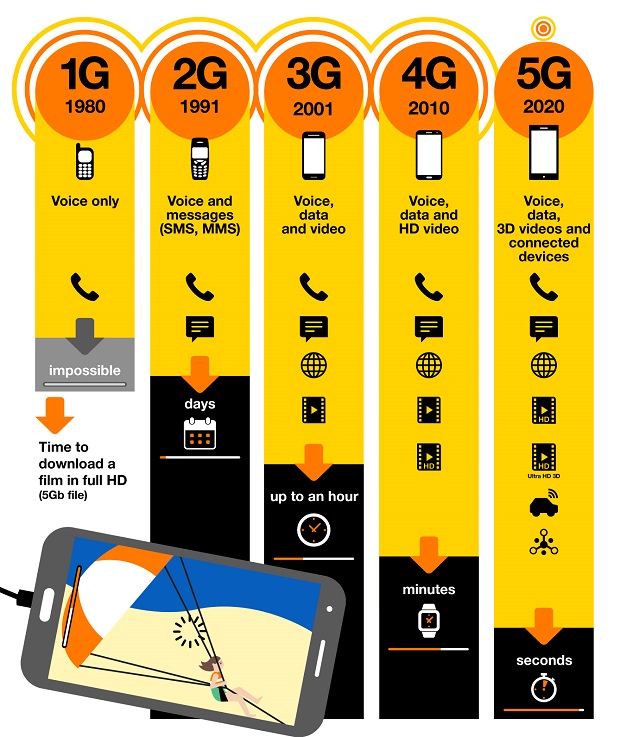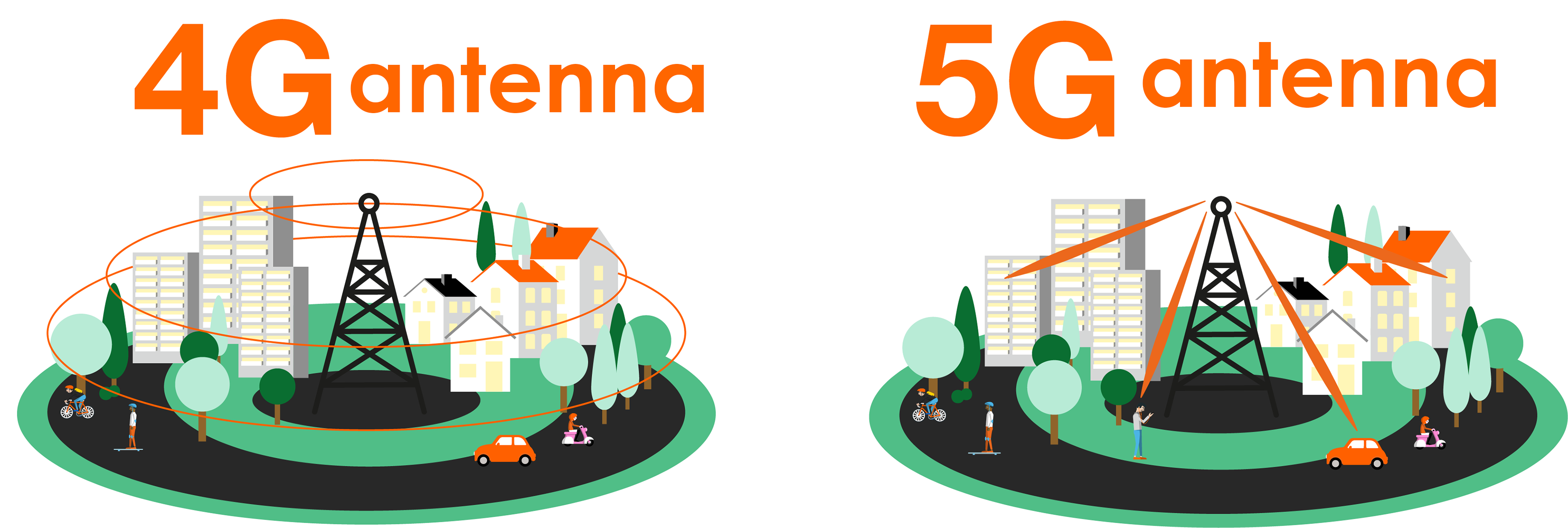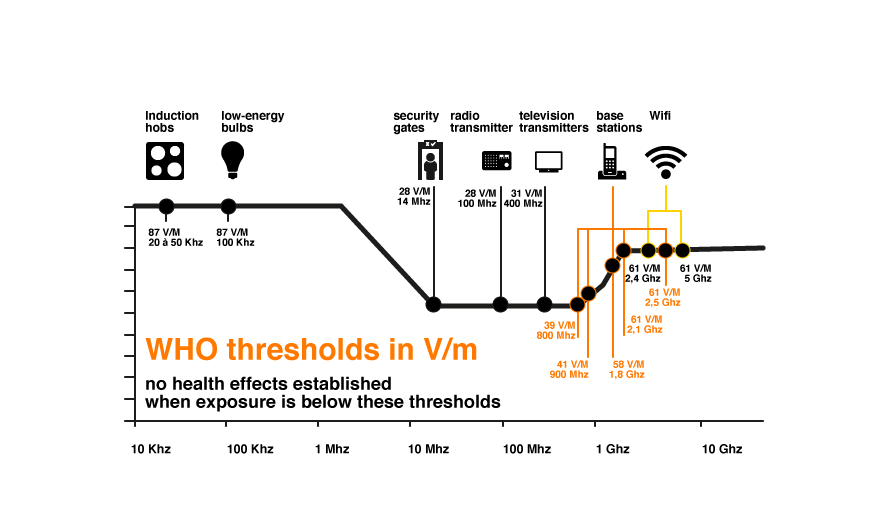5G
Mobile networks, cell towers, mobile phones, tablets, routers and all sorts of connected objects are at the heart of our daily lives. They make up a technological ecosystem that cannot exist without radio waves. As a telecommunications operator, we are helping to build this digital world. We have a perfect understanding of its technical characteristics and we ensure our entire approach takes place within a strict scientific and regulatory framework. As such, we commit to transparently relay information about radio waves in our industry.
5G is a scalable mobile technology which covers new functionalities. It is designed to meet the exponential demand for connectivity and covers new applications thanks to very high data speeds (several Gigabytes), high responsiveness (a low latency time of a few milliseconds) and strong reliability.

Technical characteristics
The first 5G deployments are taking place mainly in the 3.5 GHz frequency bandwidth, which is a bandwidth very close to current mobile networks (3G/4G and Wi-Fi) in terms of coverage. This means that many existing antennae sites may be reused for 5G, without adding new sites.
The main difference with existing networks lies in the use of MIMO (Multiple Input Multiple Output) smart antennae, which each comprise a large number of miniature antennae and enable us to reach speeds and a transmission capacity that are unachievable today with 4G.
These smart antennae emit radio waves where the connection requires. As they are directional, they only emit on demand, i.e. only when devices need to connect to the network. Unlike standard antennae which emit continuously over an entire geographic area (cells), they respond to the demand of a device that connects to the network.
This characteristic enables antennae to switch to standby when they are not activated, offering better energy consumption management.

Furthermore, in certain network cells, small additional antennae can be installed to provide additional coverage and capacity for certain ‘blind’ zones. These small additional antennae may be located on street furniture or inside buildings.
Then, to achieve higher speeds (close to fibre) 5G will use higher 26 GHz frequencies. This frequency bandwidth, referred to as ‘millimetre waves’, is already used by certain equipment such as speed cameras, vehicle anti-collision systems, airport security gates, etc.
The regulatory and health framework
5G follows the international directives of the ICNIRP (International Commission on Non-Ionizing Radiation Protection) and the IEEE (Institute of Electrical and Electronics Engineers) recognised by the World Health Organisation.
The frequencies used by 5G are among the radio waves to which thousands of studies have been dedicated for more than 20 years. After a systematic analysis of all these studies, the national and international health authorities have concluded that there is no proven health risk below the thresholds defined by international directives.
These thresholds are detailed in European regulation no. 1999/519/EC dated 12/07/99 and their validity was reconfirmed very recently by the Commission in a parliamentary response in May 2019.
Note however, with the arrival of 5G, slight increases to overall radio wave exposure could be observed when it is added to an existing network. Nonetheless, this exposure remains very limited in light of the / far below the authorised limits. The IEC (International Electrotechnical Commission) and CENELEC (European Committee for Electrotechnical Standardization) already enable us to assess antennae and 5G mobile telephones’ levels of exposure and compliance.
As a reminder: the maximum exposure limit of 5G antennae at 3.5 GHz and above is 61V/m and 5G mobile telephones (operating at 3.5 GHz) must not exceed 2W/kg (for their SAR) just like existing devices that use 2G, 3G and 4G.


for more information:
- list of 5G health advisories
- facts and fiction about 5G
- your questions about 5G and health
- what do the new uses of wireless technologies mean for radio frequency exposure?
- safety of 5G mobile networks
- OMS Q&A – 5G Mobile networks and health
![]() Radio waves and health effects by Anne Perrin
Radio waves and health effects by Anne Perrin
![]() International Electrotechnical Commission and 5G by Mike Wood
International Electrotechnical Commission and 5G by Mike Wood
for more information from Orange